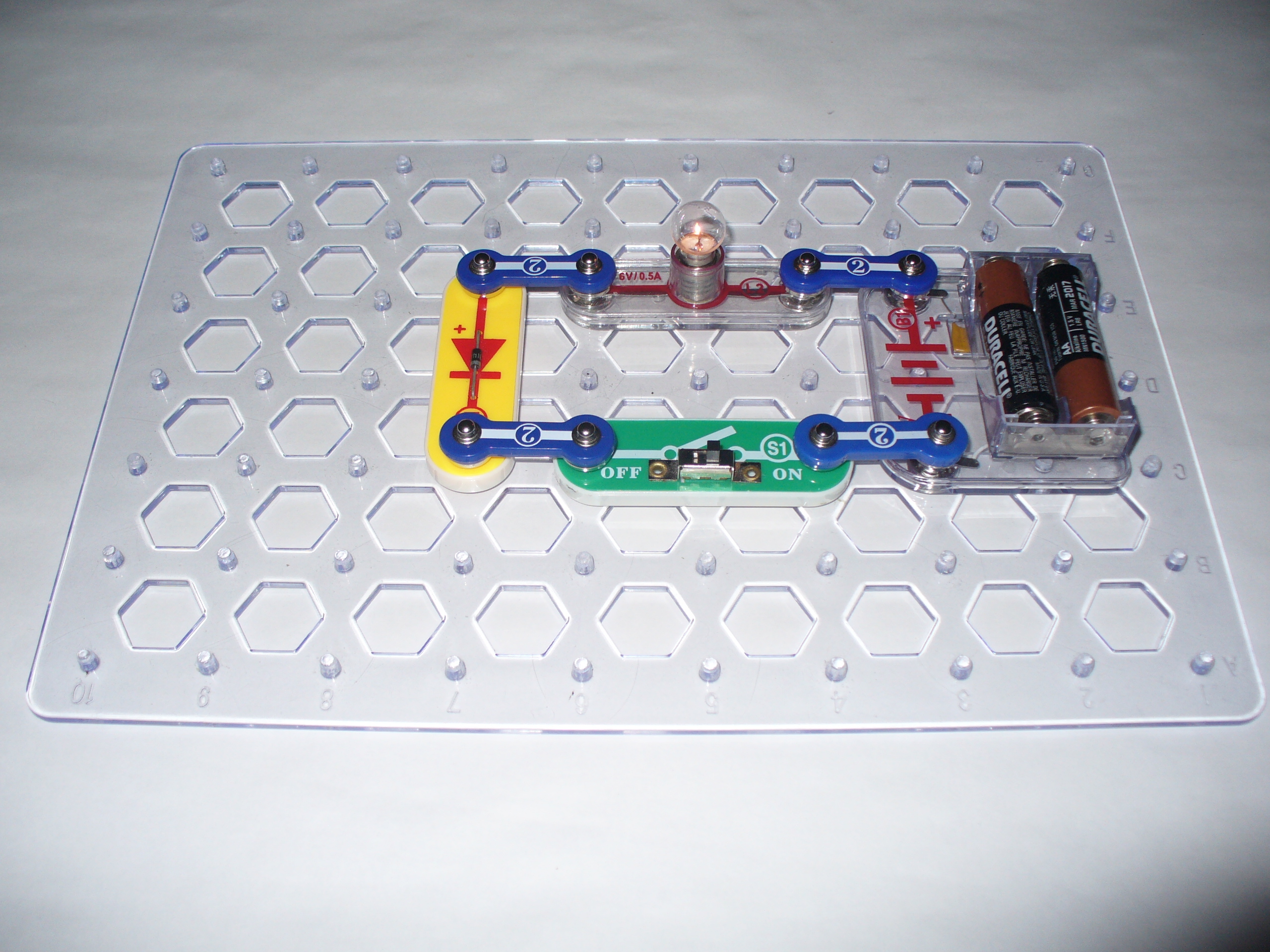Now we can see what happens when we reverse the diode. Build the circuit shown with the diode in the reverse direction. The photos show the step-by-step build. When you’re done building the circuit, slide the switch (S1) from the off position to the on position. Well…nothing happens.
In a DC (direct current) circuit, the electricity flows in one direction.
When you switch the circuit on you can think of it as current flowing from the positive side of the battery (marked with a “+” sign) to ground (marked with a “-” sign) and you can think of the flow of current as kinetic energy that can be used to do useful work such as light up an incandescent bulb.
So, when you switch the circuit on, why doesn’t the light bulb light up? Because the diode is blocking the flow of electrcity like the ping pong ball on the snorkel blocking the water from getting in.

